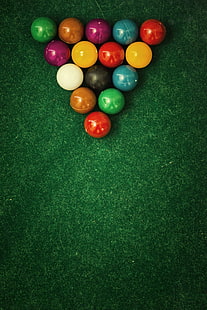Here is the science behind An ideal What Is Billiards
페이지 정보

본문
Nowhere did those shorn locks fall harder than in Leominster, Massachusetts, which had been the country's comb capital since before the Revolutionary War and which was now the cradle of the celluloid industry, much of it devoted to combs. As the years went on and after World War II it was thought the game may go into decline this was because soldiers returning from the war were interested in buying homes or building careers rather than spending days in a poolroom. For all its significance, celluloid had a fairly modest place in the material world of the early twentieth century, limited mainly to novelties and small decorative and utilitarian items, like the comb. These plastic prototypes found their way into a few decorative items, such as daguerreotype cases, but they were really only intimations of things to come. We were fast on our way to becoming a country of consumers.

Special sets designed to be more easily discernible on television substitute pink for the dark purple of the 4 and 12 and light tan for the darker maroon of the 7 and 15 balls, and these alternative-color sets are now also available to consumers. Peter Sellers, Mia Farrow, and Raquel Welch hidden behind dark lenses. Setting up in a shack behind his home, he began experimenting with various combinations of solvents and a doughy mixture made of nitric acid and cotton. It wasn't until the development of more cooperative polymers that plastics truly began to transform the look, feel, and quality of our lives. It delves more deeply into some of the subjects discussed in this article. Stroke the ball softer, for one important example, and you'll get more english, since the forward momentum of the ball goes against the sidespin on shots struck too hard. Hyatt's breakthrough came in 1869. After years of trial and error, what is billiards Hyatt ran an experiment that yielded a whitish material that had "the consistency of shoe leather" but the capacity to do much more than sole a pair of shoes. Celluloid could be rendered with the rich creamy hues and striations of the finest tusks from Ceylon, a faux material marketed as French Ivory.
It didn't turn brittle, like rubber, or become cracked and discolored, like natural ivory. Like other plastics that would follow, celluloid offered a means for Americans to buy their way into new stations in life. Shop and Buy Here! Here were materials that were malleable but also amenable to being hardened into a final manufactured form. In an era already being rapidly transformed by industrialization, that was an alluring combination of qualities-one hearkening to both the solid past and the tantalizingly fluid future. The Victorian era was fascinated with natural plastics such as rubber and shellac. It was created from a natural polymer-the cellulose in the cotton-but had a versatility none of the known natural plastics possessed. By the 1940s, we had both the plastics and the machines to mass-produce plastic products. Injection-molding machines-now standard equipment in plastics manufacturing-turned raw plastic powders or pellets into a molded, finished product in a one-shot process. Nineteenth-century patent books are filled with inventions involving combinations of cork, sawdust, rubbers, and gums, even blood and milk protein, all designed to yield materials that had some of the qualities we now ascribe to plastic. Hyatt wrote in one of his patent applications. Rich in society and history, Jeddah is the one of the biggest urban regions in the Kingdom.
The cue ball must hit at least one object ball and the object ball must hit a cushion or a pocket. If a player pockets the 8 ball and the cue ball in the same shot, that player forfeits the game. The same is the case here.- Because of its bigger size and mass, a heavier white ball results in some extra forward roll. Foreword by Jimmy White MBE. He hit on the idea of making sunglasses, creating an entirely new mass market. Audiences from Seattle to New York roared at the antics of Buster Keaton and thrilled to hear Al Jolson speak the first words in a talkie: "Wait a minute, wait a minute, you ain't heard nothin' yet." The mass culture of film reeled across class, ethnic, racial, and regional lines, drawing one and all into shared stories and imbuing us with the sense that reality itself is as changeable and ephemeral as the names on the movie marquee. In 1914, Irene Castle, a ballroom dancer turned movie star, decided to cut her long hair into a short bob, prompting female fans across the country to take scissors to their own hair. Celluloid appeared at a time when the country was changing from an agrarian economy to an industrial one.
- 이전글The 10 Scariest Things About Situs Toto Login 24.09.20
- 다음글How To Save Money On Mesothelioma 24.09.20


